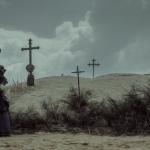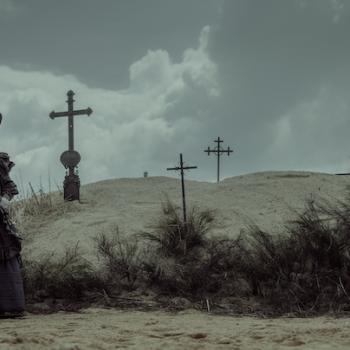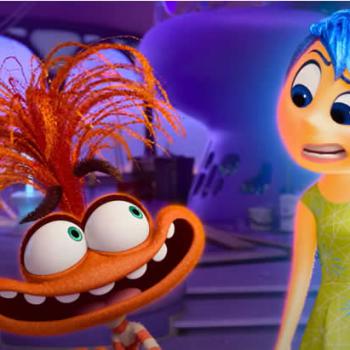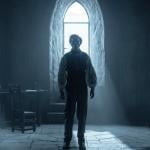We’ve seen sexy vampires, sparkly vampires, atheistic vampires who might take their morning showers in holy water without ill effect.
It feels like it’s been a while since we’ve seen a real vampire vampire—a monster smelling of blood and brimstone, an unholy creature at home in, at least, the upper reaches of hell. Not a misunderstood antihero or an occult superhero, but something altogether evil.
Enter Count Orlok, the refreshingly old-fashioned villain from the latest Nosferatu movie. And his dark presence infuses the film with not just fear, but faith.
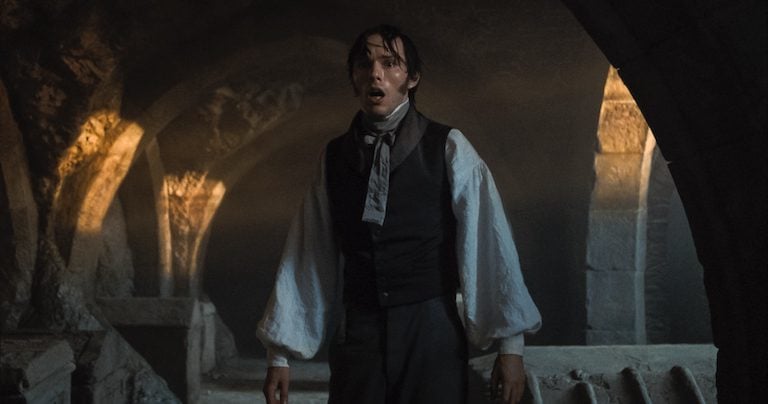
Old and Older
As you’re probably aware, the core story of Nosferatu extends back to 1897, with Bram Stoker’s original novel Dracula. As the film industry started coming into its own (and nine years before the first official Dracula movie was made), the German-based Prana Film decided to produce a movie based on the novel—without getting the rights to it. Prana changed a few details in its 1922 movie Nosferatu (including the locations and the name of the villain to Orlok), but Prana was sued anyway. It lost the lawsuit and was ordered to destroy every copy of the movie.
They didn’t destroy all of them, though: And as a result, cinephiles can still watch one of the greatest silent films ever.
The 2024 version of Nosferatu is very different from the original. Beyond the obvious inclusion of sound and color, the movie makes a jump into hard R territory, featuring all the blood modern horror fans expect and a surprising amount of sex and sensuality. (Check out my review at Plugged In for more on that.)
And Count Orlok (played by Bill Skarsgård) is a far different creature—more in keeping with Stoker’s original vision of the vampire, in many respects. Gone is the hairless, almost alien vibe of the 1922 Orlok. The 2024 version comes with a mustache that drips down his face and a corpse-like visage. This Orlok looks more human, but every time we see him, we can almost smell dust and decay.
But the new movie consciously echoes the old, as well. Orlok brings not just himself to the bustling German city of Wisburg, but the plague: Rats tear through the streets and people die from disease by the score. Visually, it echoes the original—down to a shadowy hand reaching over Wisburg. And the ending—well, we’ll get to that.
But most especially, 2024’s Nosferatu reminds us that the guy is evil, pure and unadulterated. He’s the way he is because he wanted it.
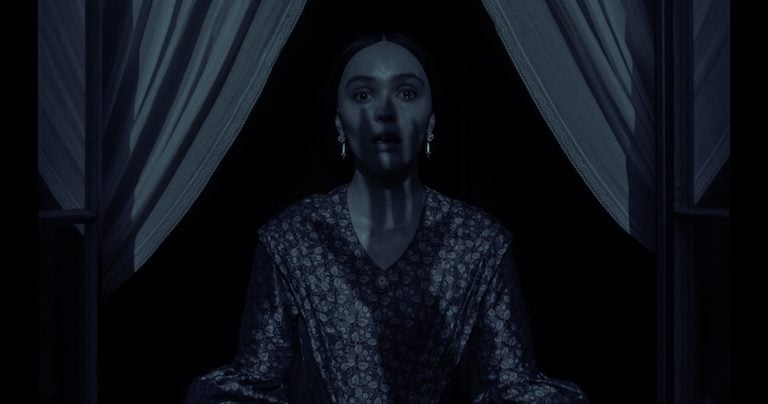
‘Beware of His Shadow’
The story begins simply enough. A young real estate clerk named Thomas (Nicholas Hoult) is tasked with traveling to a not-so-far-away country and finish up some final details on a handsome transaction: Seems a foreign aristocrat wishes to settle in Wisburg. Herr Knock, Thomas’ boss (played by Simon McBurney), warns him that the gentleman is “very old and … eccentric. … one foot in the grave, so to speak.” But Thomas will be well paid, and a promotion might even be in the offing. And with Thomas a young newlywed doing his best to provide for his young wife, Ellen (Lily-Rose Depp), a handsome commission and a career step up sounds well worth the inconvenience.
But Thomas’ trip proves more than inconvenient. Ellen experiences horrific premonitions. Locals near Count Orlok’s castle beg him to turn back. “Please don’t go there,” one says. “Beware of his shadow.” And when Thomas insists, he’s given a cross and instructed to “pray, pray, pray.”
Once Thomas arrives at the castle, he’s greeted by the strange owner, who demands to be addressed not as sir, but as lord—as “my honor of my blood demands it.”
This is significant: The title “lord” comes freighted with meaning and responsibility. To call someone “sir” is merely Victorian etiquette. The title “lord,” in ancient and feudal times, indicated that the person being addressed as such was owed fealty, loyalty and service. Orlok is not simply asking for respect, but demanding obedience and allegiance. And perhaps, given Orlok’s infernal nature, a change of allegiance from the Christian Lord, as well.
Those of us familiar with Dracula or the original Nosferatu know what to expect next: Thomas is attacked and imprisoned. Orlok is off to Wisburg, where he plans to take Thomas’ own wife.
But Thomas escapes and, ultimately, finds himself in a church, where he—and we—learn something more of Orlok’s origins. Seems he was not bitten by an older vampire or otherwise accidentally infected. He was a “black enchanter” who was so evil that “the devil preserved his soul that his corpse may walk again in blasphemy.”
But even this only begins to hint at Orlok’s true diabolical nature.
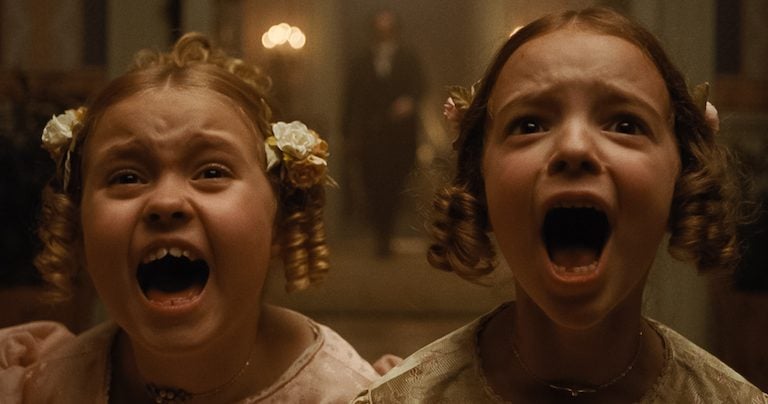
No Mere Vampire
In the original 1931 movie Dracula, the titular vampire could travel around as a bat. Orlok has no such need of that sort of contrivance. He can visit people in dreams and visions. And that’s not all.
In the movie’s opening moments, we hear a young, pre-Thomas Ellen call into the darkness. “Come to me,” she says. “The guardian angel, the spirit of comfort. Anything. Hear my call.”
That call is answered by anything. Orlok, it seems, comes, and comes in at least quasi-physical form. He was called as a demon might heed the call of a magician or witch. And through that call, Orlok binds himself to Ellen. And Ellen, as she falls in love with Thomas and grows wise enough to regret this adolescent infernal affair, cannot shake him. Cannot be rid of him.
Orlok is no mere vampire. In fact, Professor Van Helsing—an expert in the occult who comes to be Orlok’s most knowledgeable opponent—declares that he is “death itself.”
Director Robert Eggers uses a seven-pointed, inverted heptogram as Orlok’s personal symbol: We see it on his coffin and echoed elsewhere. That symbol crops up in some modern occult traditions, and it seems to visually tie Orlok to the darkest of dark magic. Knock, Thomas’ boss who proves to be in the thrall of the count, uses language that feels ripped straight from Revelation.
“He shall cast upon you curses, confusion, afflictions, rebukes,” he says. “For you have forsaken me. And he shall reign over all of your empty corpses.”
Knock uses the word “devourance” in reference to Orlok, and that echoes Van Helsing’s own sense of the monster. “Like every plague, its sole desire is to consume all life on earth.”
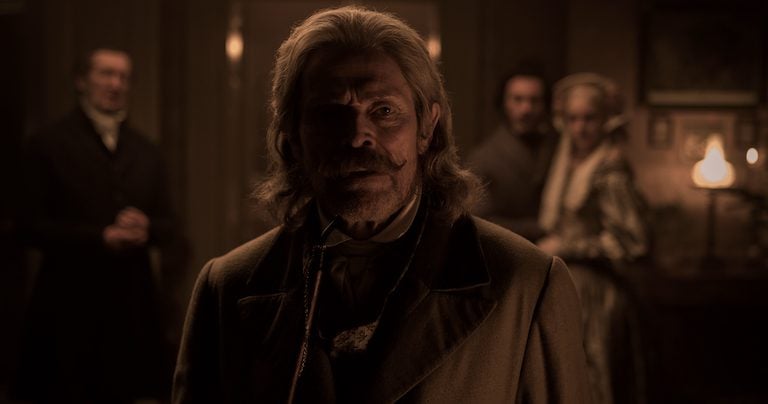
The Cold Dark of Science
In many a modern horror movie, all this might be dismissed as mere superstition. Religious modes of attack would be ineffectual: Science and reason must win out.
But Nosferatu embraces the story’s inherently spiritual underpinnings and even doubles down on them.
When Thomas, visiting Count Orlok in his castle, asks the count about some curious rituals he’s seen from the villagers, Orlok waves them off and seeks to make an ally of reason. “Many superstitions here may seem backwards to a young man of your high learning,” Orlok says. He adds, “How I look forward to retiring to your city of a modern mind who knows nothing of, nor believes any, such morbid fairy tales.”
When Orlok does come to the city, he finds those unsupersitious men of “high learning” to be unwitting allies. Freidrich, a friend of Thomas, spends much of the movie waving away Van Helsing’s weird religious pronouncements, insisting that the death that is engulfing the city is a very natural, not supernatural, plague. And so he insists until his own small world is utterly consumed.
But Van Helsing (Willem Dafoe) places no such comfort in science or reason.
“I have seen things in this world that would’ve made Isaac Newton crawl back into his mother’s womb,” he says. “We have not become so much enlightened as we have been blinded by the gaseous light of science. … And I tell you, if we are to tame darkness, we must first face that it exists.”
That is a starkly religious pronouncement. And as the movie goes on, Van Helsing acts not so much like a vampire hunter as an exorcist, calling on God and His angels through a bevy of archaic names.
But—and we’ll definitely be diving into spoilers here—Van Helsing isn’t the one who’ll beat Orlok, and Van Helsing knows it.
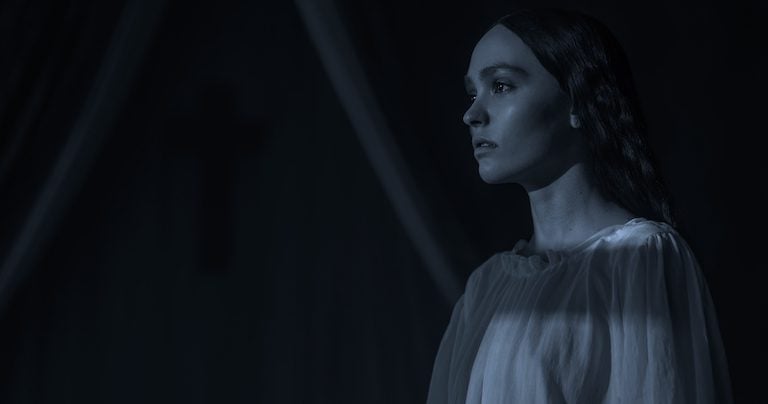
The Sun Rises
Nosferatu is woven throughout with a strong thread of feminism—a thread so powerful that many secular reviewers have focused on that above all. And yeah, it’s certainly an important part of the film.
But that thread is braided with another: A very Christian concept of sacrifice.
The foundation of Christianity is built on an act of sacrifice: When Jesus died on the cross, it looked to the world, and perhaps to Satan himself, as a game-ending defeat. The sky itself went dark, the Bible says, when Christ was crucified.
And yet, three days later—just after sunrise on that third day, according to Mark 16—three women came to Jesus’ tomb and found it empty.
In Nosferatu, another woman takes center stage in a moment of tragedy and triumph: Ellen herself.
While the movie’s menfolk rush out to kill the vampire, both Ellen and Van Helsing know that it’s just a distraction. This vampire—this nosferatu—can only be vanquished through a “willing sacrifice.”
Ellen is that sacrifice. She promises Orlok that she will give herself to him willingly, just as Orlok had demanded. She opens her bedroom to him, bares her heart and lets him feast. Orlok has won.
But as he drains Ellen of life, Ellen pushes him to take “more, more.” All the while, the sun begins to cut the horizon. Its cleansing yellow light crests, and Nosferatu—unable to leave—is finally, utterly vanquished.
Van Helsing had read about vampires vanquished in such a way. And as he arrives with Thomas in Ellen’s room, bathed in golden light, he quotes from one of his sources.
“Her willing sacrifice thus broke the curse and freed them from the plague of nosferatu,” he says.
It’s an echo of how another willing sacrifice conquered Satan’s designs and death itself. How the sun rises and wipes away shadow. How the light shines in the darkness, and the darkness has not overcome it.


